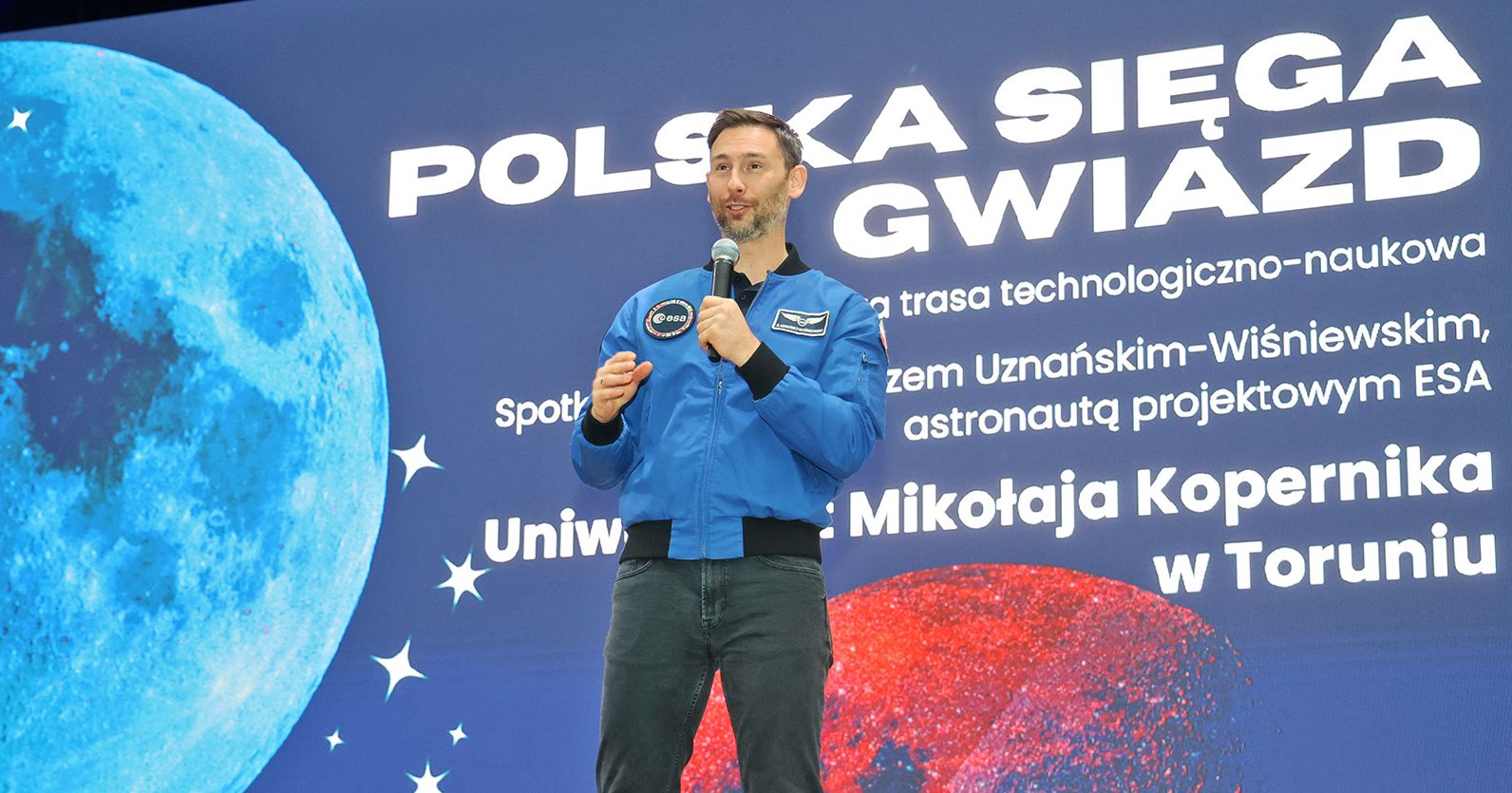 Campus life
Campus life
We have reached the stars
Dr. eng. Sławosz Uznański-Wiśniewski, astronaut of the European Space Agency, met with the academic community of the region and students from schools in the Kujawsko-Pomorskie Voivodeship. The Nicolaus Copernicus University was the 10th stop on the nationwide technology and science tour "IGNIS – Polska reaches the stars".
The Nicolaus Copernicus University is one of 17 leading Polish universities hosting dr. eng. Sławosz Uznański-Wiśniewski. The "IGNIS – Poland Reaches the Stars" series – described by the astronaut himself as the first true Polish Space Master Class – combines scientific knowledge with practical experience gained from the IGNIS space mission. At the heart of the program are 13 experiments conducted on the International Space Station, symbolizing the technological leap forward of Polish science and its growing participation in global space research.
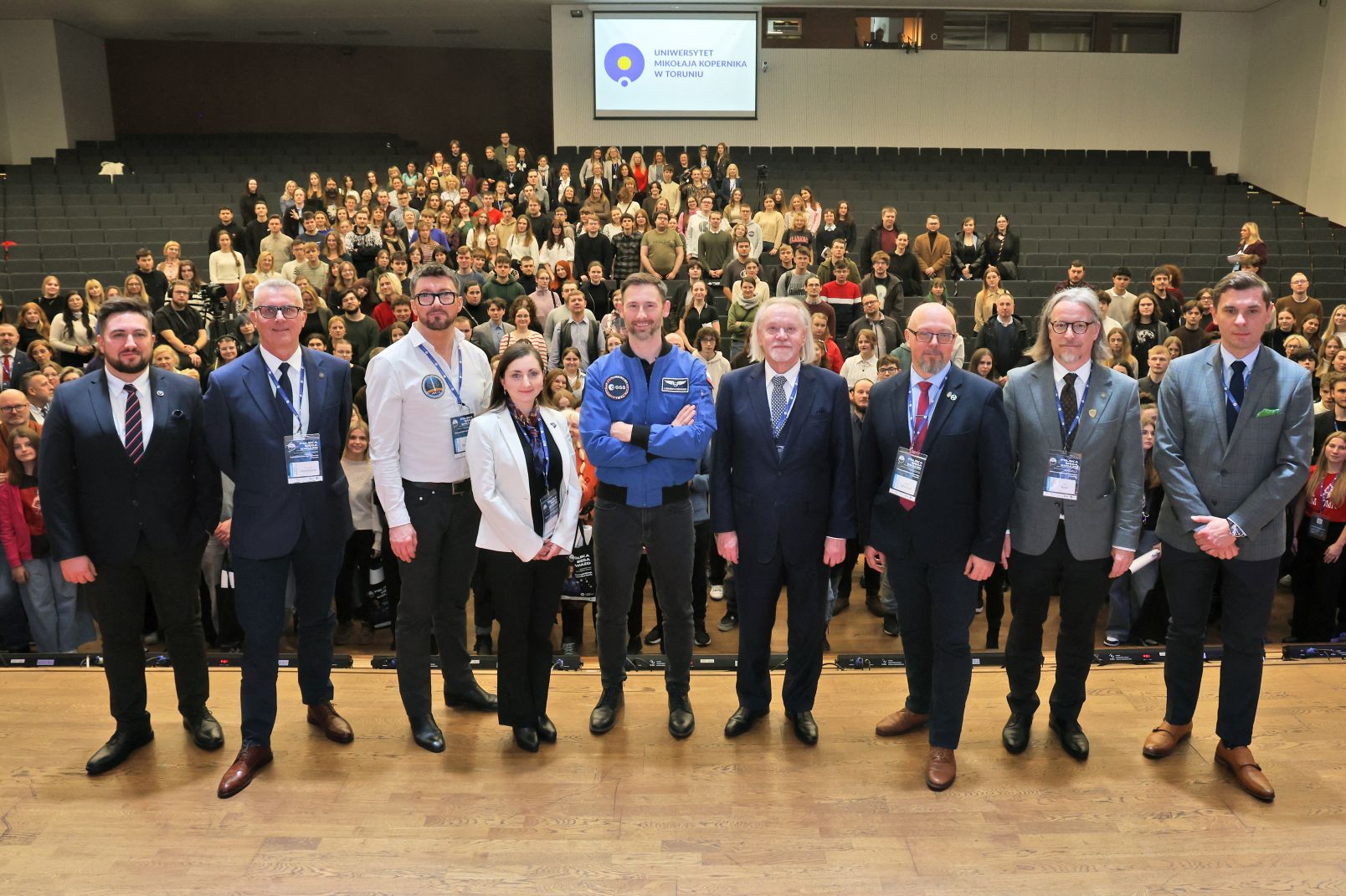
Dr. Sławosz Uznański-Wiśniewski met with the Nicolaus Copernicus University community, led by its authorities, representatives of the Ministry of Science and Higher Education and the Polish Space Agency, as well as scientists and entrepreneurs supervising experiments conducted in space. Photo: Andrzej Romański
Outer space at Street Gagarina
On Thursday, November 20th, in the NCU Main Auditorium, the astronaut met with students, doctoral students, and employees of our University and universities from Bydgoszcz, Włocławek, and Grudziądz. He talked about his path to the European Space Agency (ESA), preparations for space missions, his stay at the International Space Station, and the experiments conducted there. The second part of the meeting was addressed to younger science enthusiasts — primary and secondary school students who came to Toruń from all over the region.
The meeting was attended by the authorities of our University, led by the Rector, Prof. Andrzej Tretyn. Also present were Jarosław Rybusiński, representative of the Ministry of Science and Higher Education, Piotr Całbecki, Marshal of the Kujawsko-Pomorskie Voivodeship, Col. Marcin Mazura, Vice-President of the Polish Space Agency, as well as Prof. Mirosława Szark-Eckardt, Vice-Rector for Student Affairs and Quality of Education at the Kazimierz Wielki University in Bydgoszcz, and dr. Robert Musiałkiewicz, SAAS Prof, Rector of the State Academy of Applied Sciences in Włocławek.
I am proud that the Kujawsko-Pomorskie Voivodeship can host such an outstanding figure - an astronaut, researcher, and inspiration for younger generations - right here at our university. For us, this is not only a great honour, but also a source of motivation and hope for a future in which science and dreams reach for the stars, said Prof. dr. habil. Andrzej Tretyn, Rector of the Nicolaus Copernicus University as he welcomed the guest.
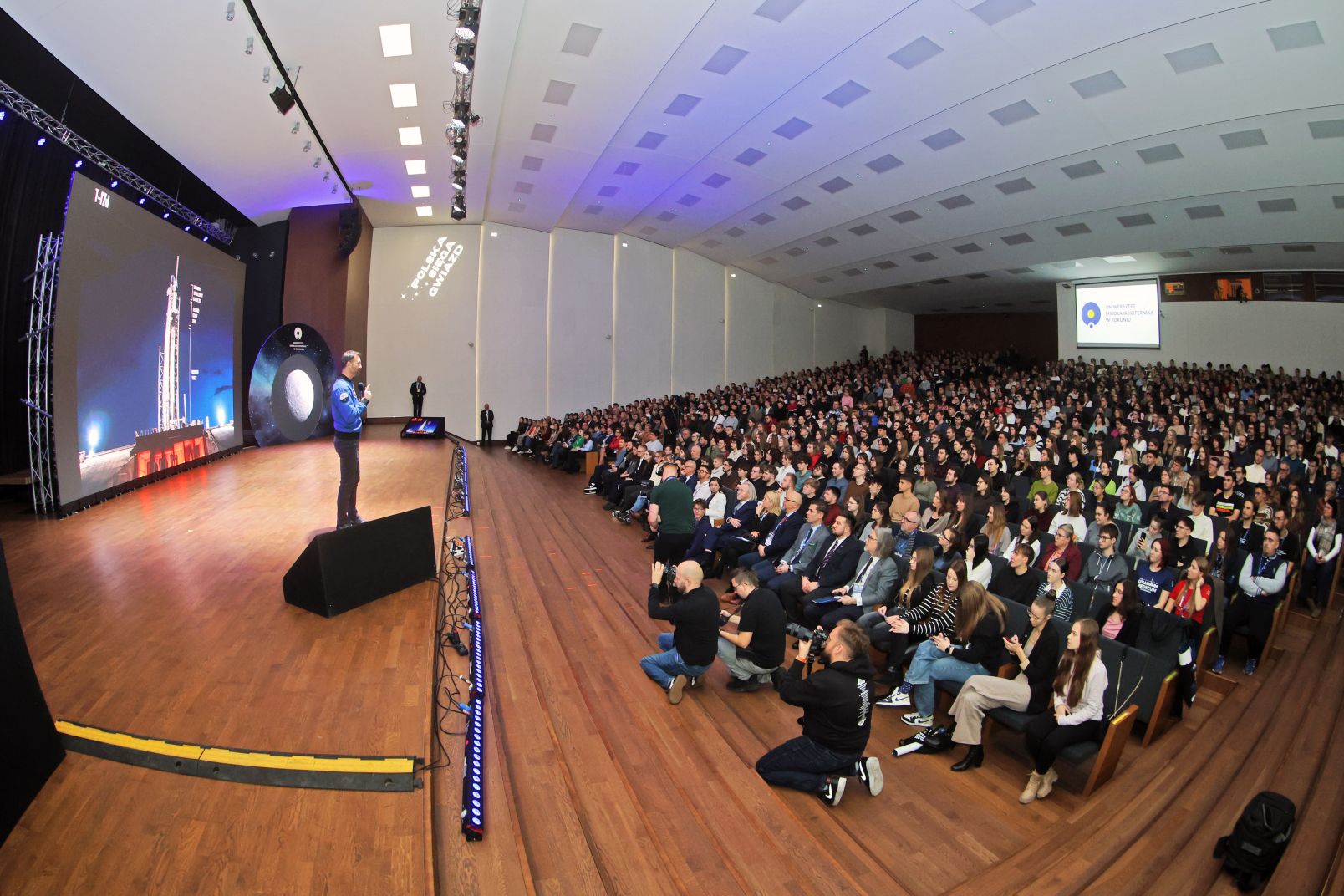
The meeting attracted a lot of interest – the NCU Main Auditorium was filled to capacityPhoto: Andrzej Romański
The Rector emphasized that dr. eng. Sławosz Uznański-Wiśniewski belongs to an extremely elite group, which is unlikely to change in the coming decades: all the people who have been in outer space since the beginning of the space age could easily fit into the audience of our university auditorium.
This is one of the reasons why events such as today's are so popular. Romantic visions of distant journeys and stories about remote, mysterious places have always fascinated people, said Rector Tretyn. - However, today, space exploration not only captures our imagination, it is no longer just proof of our civilization's capabilities. We are becoming increasingly aware that these difficult missions are an important part of the greatest challenge facing humanity – understanding the laws that govern the world. Space has become a new laboratory.
Sławosz Uznański-Wiśniewski presented Prof. Tretyn with a patch, a symbolic emblem representing the mission, the crew, and its goals (the patch of the Polish IGNIS mission depicts a white and red eagle whose wings form the contours of the Tatra Mountains, and its tail resembles a flame, referring to the Latin meaning of "ignis" - "fire"). The NCU Rector also gave our guest a gift. The astronaut received Nicolaus Copernicus's work De revolutionibus... and a Copernicus mascot dressed as an astronaut.

Exchange of gifts: Rector Tretyn received a mission patch, and Uznański-Wiśniewski received the work of Nicolaus CopernicusPhoto: Andrzej Romański
Space travel
Dr. Sławosz Uznański-Wiśniewski, who was greeted with thunderous applause on the stage of the packed NCU Main Auditorium, is the second Pole in history and the 743rd person to have been in space (635th in orbital flight). He is also the first Pole to stay (from June 25 to July 15, 2025) on board the International Space Station. He told the audience about his path to the European Space Agency and his preparations for the mission. He gave an interesting insight into the behind-the-scenes of space travel – from the technical details of the construction of the rocket and capsule to the organization of everyday life on the station. He talked about the simplest activities that became challenges in zero gravity, the tangle of cables, attaching a sleeping bag to the wall, a button in the elevator, and why the mission crew must play (and win) cards with the commander before launch.
The astronaut also presented unique photos and videos, including the flight trajectory of the capsule that took the astronauts to the International Space Station, as well as photos of the capsule itself and the crew's daily life.
Sławosz Uznański-Wiśniewski had to take care of many tasks immediately after stepping through the station door.
The challenge was the need to carry out the work in a short time and single-handedly, explained Sławosz Uznański-Wiśniewski. - My work was not only about conducting scientific experiments; the educational and communication aspects were equally important – I connected with schools in Poland and the media from the station in order to talk about the mission. I created films and materials that could be used in schools. I had to be my own sound engineer, director, cameraman, and screenwriter at the same time.
After the astronaut's presentation, several participants had the opportunity to ask him questions. The young people were interested in how he adapted to life on the station, how he coped with stress, and whether his biological clock was affected by the 16 sunrises and sunsets he experienced during one Earth day.

Dr. Sławosz Uznański-Wiśniewski enriched his presentation with many photos and videos taken in spacePhoto: Andrzej Romański
Cosmic experiments
Dr. Sławosz Uznański-Wiśniewski took 13 scientific experiments, selected from among 60, which he carried out in cosmic conditions, to the International Space Station. Two of them were presented to the public in more detail by their authors.
The first one, which is special because of the contribution of the Nicolaus Copernicus University, was presented by Ewa Borowska, founder of the start-up Extremo Technologies, and Prof. Marcin Woźniak from the Department of Forensic Medicine of the Faculty of Medicine at the NCU Collegium Medicum. The Space Volcanic Algae experiment was designed to test the ability of extremophile volcanic microalgae to survive and adapt in space conditions.
The second experiment was presented by dr. habil. Marcin Dornowski, UPES Prof. from the University of Physical Education and Sport in Gdańsk, and involved EFG neurofeedback. Data was collected on the impact of neurofeedback on brain function under conditions of stress, isolation, and variable sleep cycles. The aim is to develop applications that will be able to support not only astronauts, but also people working in conditions of high mental stress, such as uniformed forces, pilots, doctors, and soldiers.
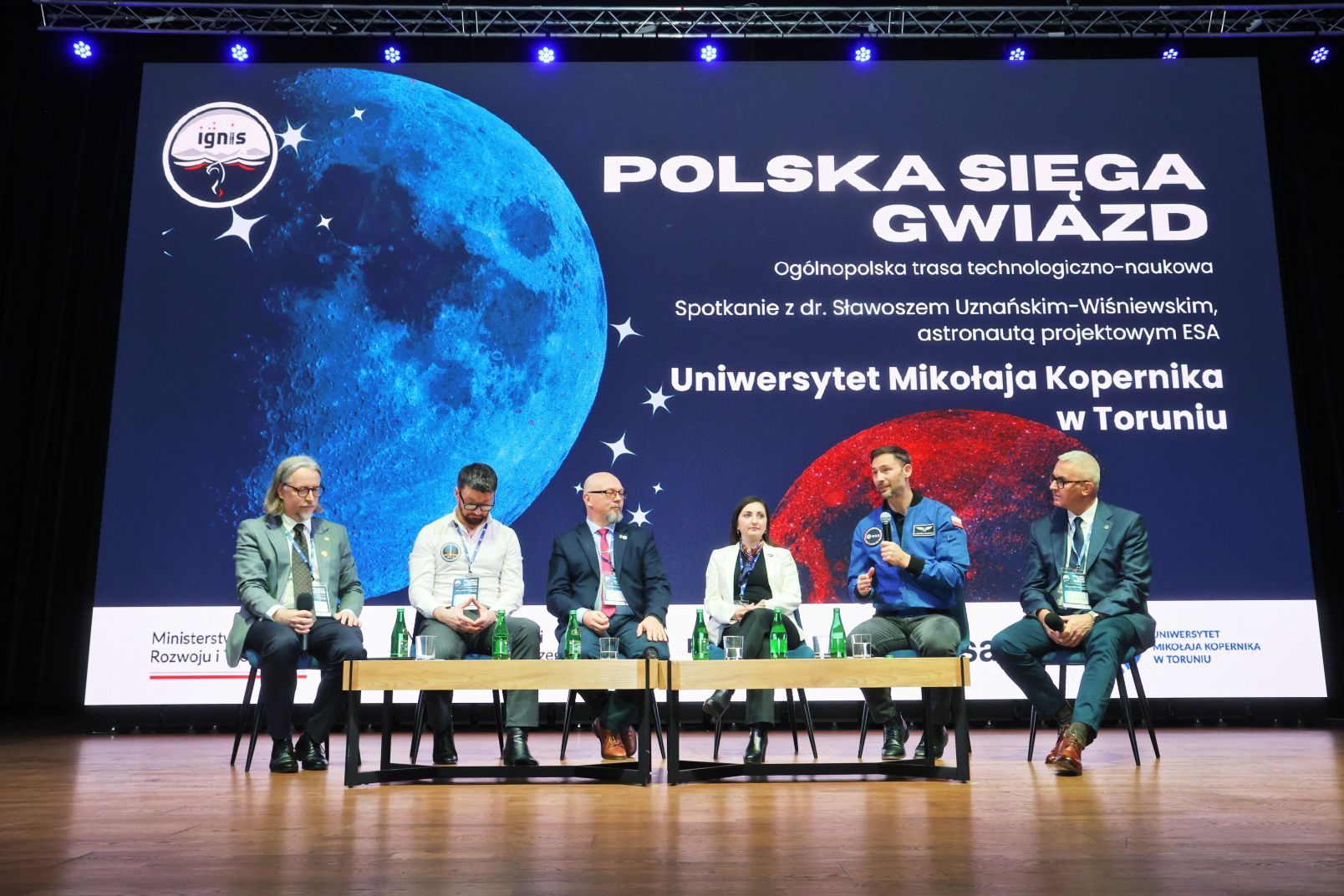
The meeting included a panel discussion led by the Vice-Rector for Science, dr. habil. Adam Koła, NCU Prof. Photo: Andrzej Romański
The experiments conducted in space by dr. eng. Sławosz Uznański-Wiśniewski were also the subject of discussion during a panel led by the first Vice-Rector for Science, dr. habil. Adam Kola, NCU Prof. Our guest took part in the panel, along with Prof. Andrzej Niedzielski from the NCU Institute of Astronomy, Prof. Marcin Woźniak from the Department of Forensic Medicine at the Faculty of Medicine of the NCU Collegium Medicum, Ewa Borowska from Extremo Technologies, and dr. habil. Marcin Dornowski, UPES Prof. The discussion focused on, among other things, the so-called “Sławosz effect," i.e., a noticeable increase in young people's interest in studies related to space exploration, Poland's role and opportunities in future projects related to space missions, and the need to strengthen and develop technologies in this field.
Nicolaus Copernicus showed the world that the Earth is not at the centre, that the cosmos is structured differently, and Sławosz Uznański-Wiśniewski shows that Poland does not have to be in the orbit of other people's dreams, but we can have our own dreams. And I wish you all these cosmic dreams, concluded Prof. Adam Kola at the end of the debate.
Cosmic children
In the second part of the meeting, dr. Sławosz Uznański-Wiśniewski met with student research clubs operating at our university. The students prepared, among other things, interactive educational materials about the brain, an exhibition inspired by space, a project related to disinformation, and they presented research conducted by underwater archaeologists, while others showed research on light pollution. At their stands, the young people also presented changes in the immune system in space, impressive space experiments, an exhibition on historical instruments for observing the sky, medical equipment for saving lives in extreme situations, and remote-controlled robots. The astronaut viewed our students' projects and had many questions for them.
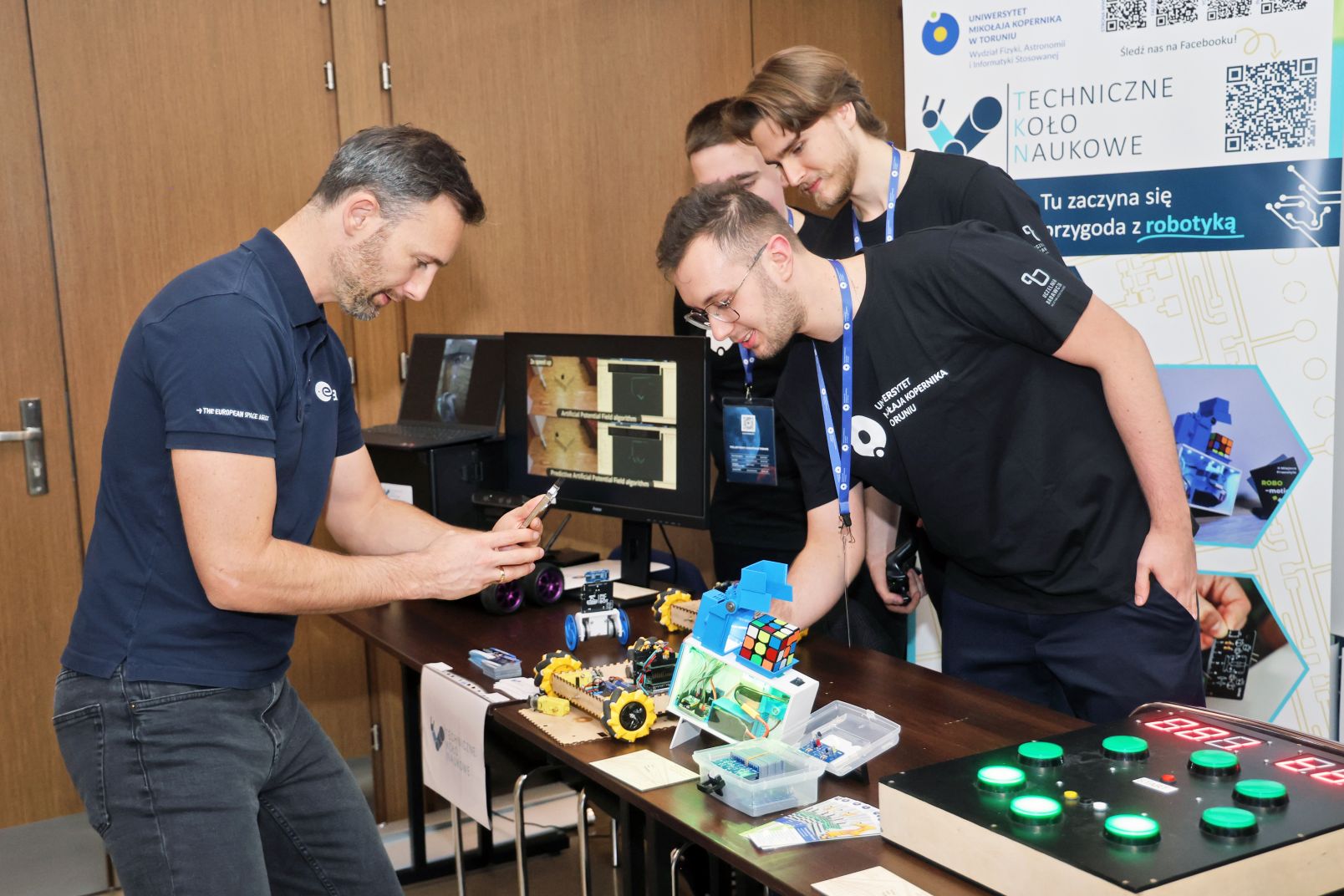
Dr. Sławosz Uznański-Wiśniewski met with representatives of student research clubs Photo: Andrzej Romański
At the same time, workshops and meetings for primary and secondary school students were held at the Collegium Humanisticum. They were led by Magdalena Maszewska from the Aleksander Jabłoński Foundation and Waldemar Krychowiak from the NCU Faculty of Physics, Astronomy, and Computer Science. The children then met with Sławosz Uznański-Wiśniewski, who talked about his space adventure and answered many questions that were on the minds of the youngest participants, including his favourite flavour of pierogi and how to perform everyday activities in zero gravity.
The organizers of the science and technology tour "Poland Reaches the Stars" are the Ministry of Development and Technology, the Ministry of Science and Higher Education, and the Polish Space Agency, in cooperation with the European Space Agency and Polish universities visited during the tour.

Students from schools across the voivodeship came to meet the second Pole in space Photo: Andrzej Romański

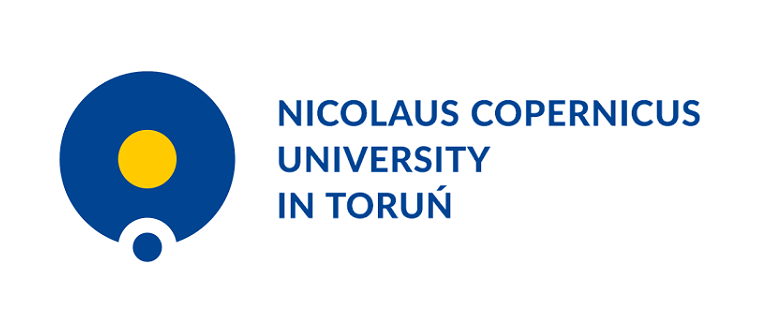 NCU News
NCU News






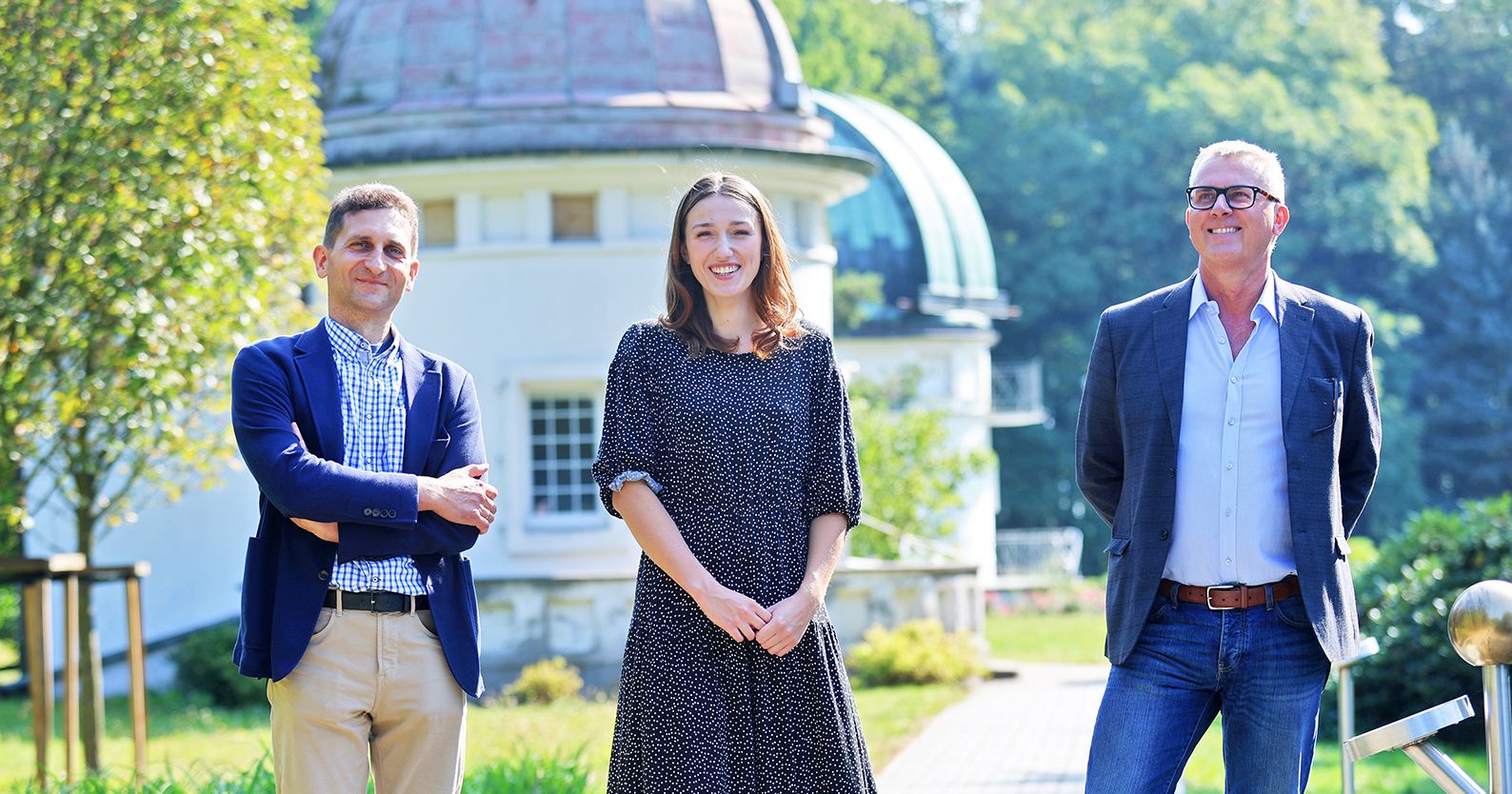 Exact sciences
Exact sciences
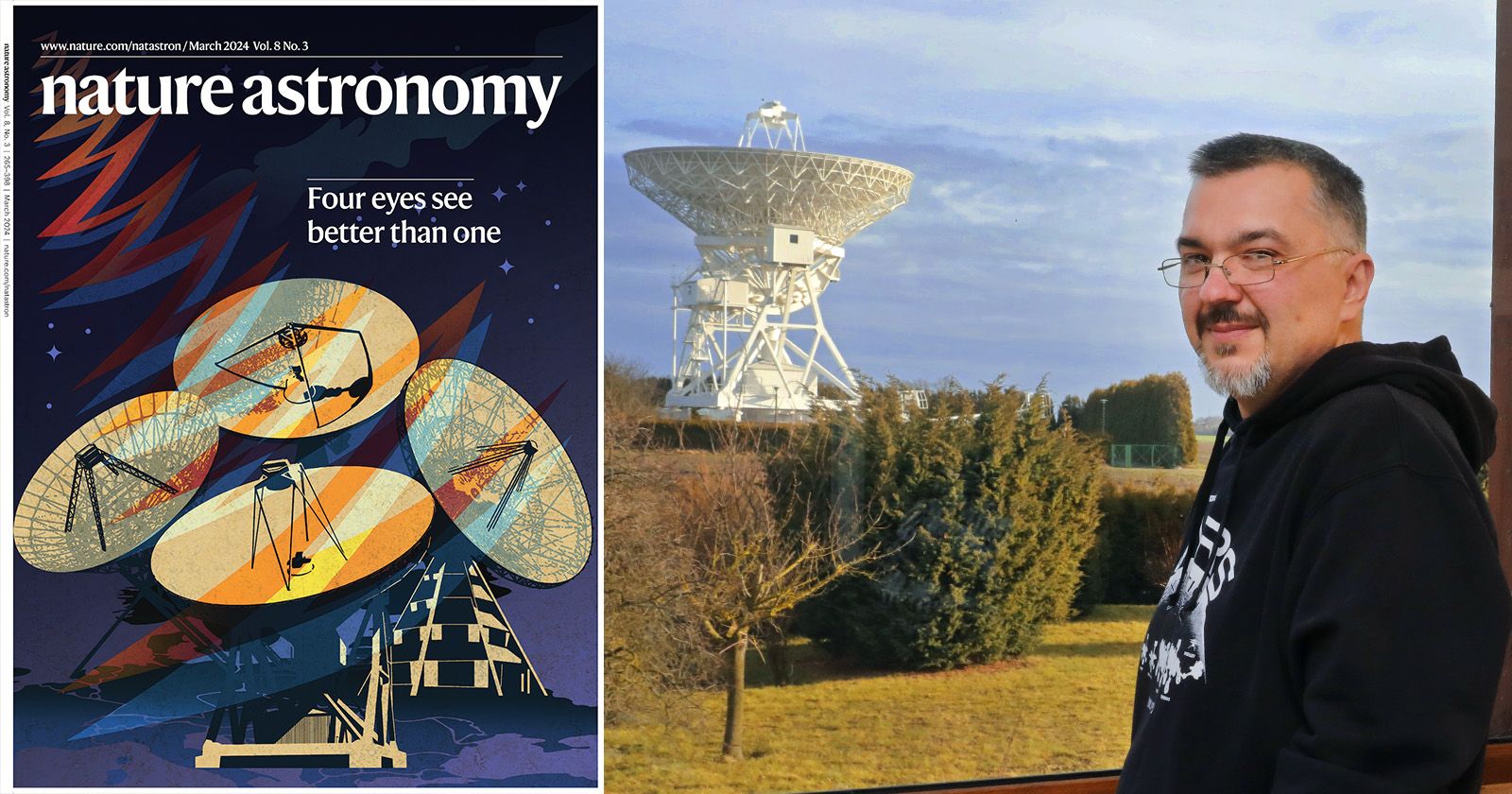 Exact sciences
Exact sciences
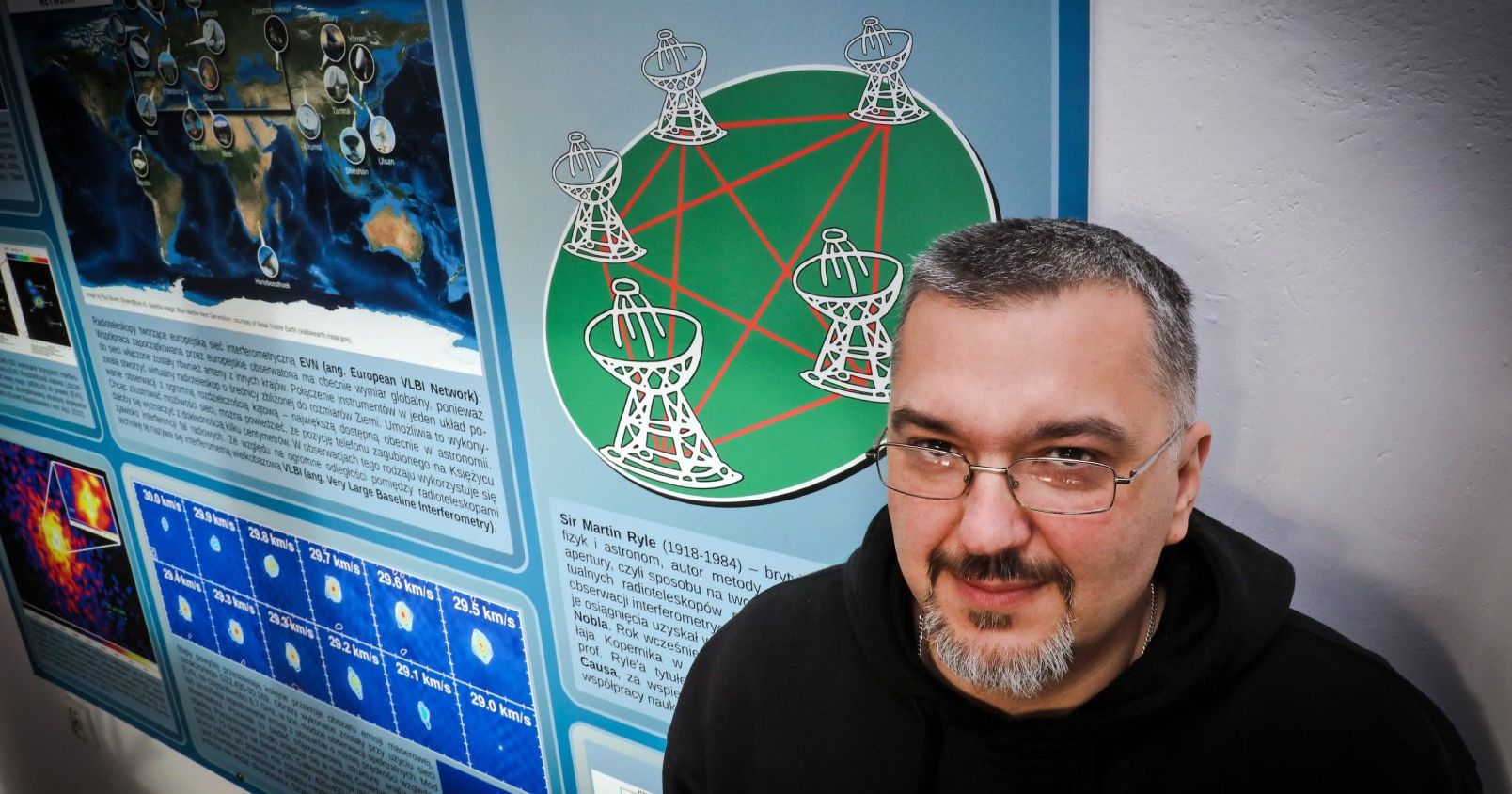 Exact sciences
Exact sciences
